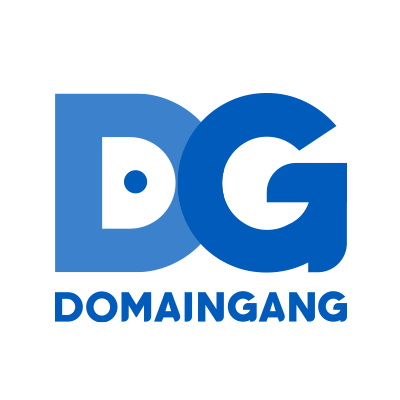YOUR AD HERE
In the current market, many of us are dealing with slower sales, making it more important than ever to cut unnecessary expenses. Over 15 years of domaining, I’ve faced similar challenges. These are strategies that worked for me, and they might help you save a substantial amount too. Here’s how I’ve managed to save at least 30% annually.
1. Use Credit Cards That Offer Cash Back on Renewals
Another way I saved money was by using credit cards that offer cash-back rewards on domain renewals. If you’re managing a large portfolio, even small cash-back percentages add up. For instance, I use the Citi® Double Cash Card, which offers 2% cash back—1% when I make a purchase and another 1% when I pay it off. I’ve also used the Chase Freedom Unlimited®, which offers 1.5% cash back. Even the Apple card offers 1% on all purchases.
When you’re spending hundreds or thousands of dollars on renewals, these small percentages can lead to real savings. In some cases, I also signed up for new credit cards specifically for domain renewals to take advantage of sign-up bonuses, which covered a large portion of my costs and even an occasional vacation. It also gave me flexibility, to buy names when I didn't immediately have cash in my account, and more than once, it helped me save some expiring names.
Downsides:
The main risk here is overspending. It’s easy to get carried away with a credit card and rack up debt, so I make sure to pay off the balance in full each month to avoid interest charges. With careful money management, though, this strategy has been a valuable way to cut costs.
2. Use Cash-Back Browser Extensions Like Rakuten and Honey
I also started using browser extensions like Rakuten and Honey to save even more when checking out. Rakuten partners with several domain registrars, offering a percentage of your purchase back as cash. All I have to do is activate the extension before I check out.
Honey, on the other hand, applies coupon codes automatically. While it doesn’t always find codes, it has saved me money on a few occasions, especially during promotional periods. It also offers Honey Gold, which can then be redeemed for gift cards and cash.
Downsides:
These extensions can slow down browsing a little and can affect privacy.
1. Transfer, Don't Renew
One of the first strategies I adopted was transferring domains after they expired instead of renewing them with the same registrar. I quickly realized that many registrars offer better deals for transfers than for renewals, which allowed me to reduce renewal costs significantly. By taking advantage of lower transfer rates in this competitive market, I was able to save quite a bit.
Over time, I also learned that many registrars run promotions during major sales events, like Cyber Monday or Black Friday, offering discounted transfers or renewals. I started timing my transfers and renewals around these promotions to get even better rates. Some registrars also offer bulk discounts if you transfer or renew multiple domains at once, which can add up quickly when managing a large portfolio.
What really helped me maximize savings was stacking different discounts and offers. For example, I would combine a registrar’s promotional offer with Rakuten or Honey for cash-back rewards, and then use a cash-back credit card to pay. This approach allowed me to layer multiple savings methods on a single transaction.
Downsides:
While this strategy has been a money-saver, it does require a time investment. I had to keep track of expiring names, gather authorization codes, and manually complete transfers, which also led to a few days of downtime—potentially causing missed sales. Additionally, not all cheap transfers go to the most user-friendly registrars, and service quality might be lower.
Staying on top of promotions can also be time-consuming. Some sales are limited to a certain number of domains, and I often had to adjust my renewal and transfer timing to align with these deals. However, the effort has been well worth it for the savings I’ve achieved, especially when managing a large portfolio on a tight budget. You can use Tldes.com to compare prices throughout various registrars.
4. Trim the Dead Weight from My Portfolio
Early on, I was guilty of holding onto domains because of their age or the price I had originally paid, even when they weren’t performing. But I eventually learned that this was draining my resources. Every year, I now review my portfolio and identify domains that aren’t getting offers, have little market relevance, or just don’t fit trends anymore.
By letting go of these "dead weight" domains, I’ve been able to reduce my renewal costs and focus on higher-potential domains. This has also made my portfolio leaner and more profitable in the long run. How many "dead weight" domains are you paying a $10 yearly subscription for right now?
Downsides:
In the short term, dropping domains can feel risky—what if one ends up selling later? It’s important to really understand which domains to cut and which to keep. For me, it was a learning process, but now I’m better at spotting the low-potential names that aren’t worth renewing. It not only freed up some capital but also a lot of my time managing them.
5. Take Advantage of Registrar Promotions and Stack Discounts
I’ve saved a lot of money by timing renewals and purchases with registrar promotions. Registrars often run sales during major events, and I’ve found that it pays to wait for these sales to transfer or renew domains. Bulk discounts are also offered at times, which can add up when you manage many domains.
What really helped me was learning to stack discounts. I combine a registrar’s promotional offer with Rakuten or Honey, and then use a cash-back credit card to pay. This allows me to get multiple layers of savings on each transaction.
Downsides:
This strategy takes time, and you have to stay on top of promotions. Not all sales will cover your entire portfolio, and you may need to adjust your timing on renewals or transfers. However, the potential savings have made the effort worth it for me.
6. Leverage Early Renewals and Multi-Year Discounts
For domains I plan to hold long-term, I take advantage of multi-year renewals. Some registrars offer discounts if you renew for 2, 3, or even 5 years instead of just 1. Locking in a discount rate for a few years can help avoid price increases, and I’ve saved a good amount this way.
For example, I’ve found registrars offering 10% off multi-year renewals, which adds up quickly across a portfolio. This strategy requires a bit more upfront spending, but it protects me from price hikes and lets me secure lower costs for longer.
Downsides:
The downside is that I’m committing to a domain for a longer period, and trends can change. What seems like a valuable domain today might not be relevant five years from now. So, I use this strategy selectively for domains I’m confident about.
7. Use Grace Deletion Periods to Test Domain Potential
A lesser-known trick I’ve used is taking advantage of grace deletion periods. Some registrars allow you to cancel a domain registration within a few days and receive a refund or credit. This has given me a way to "test" a domain name. If I don’t see early demand or realize it’s not the right fit, I can cancel it before committing to a full-year registration fee.
Downsides:
This is best for smaller batches of domains because it requires a lot of tracking and effort. For large-scale domainers, it may not be as efficient.
8. Turn Off Auto-Renewal
One of the simplest ways I’ve saved money is by turning off auto-renewal for most of my domains. Some registrars renew domains well in advance, and the renewal fees are often much higher than the original registration. By manually managing renewals, I’ve avoided surprise invoices and high fees, especially from registrars that charge premium renewal rates.
Downsides:
The risk here is accidentally missing a renewal. I’ve had to be careful to track expiration dates to prevent domains from dropping. But I prefer that risk to receiving a $30 invoice for a domain that I didn’t plan on renewing.
9. Claim Domain Renewals as a Tax Deduction
One often-overlooked way to save money in the long run is by claiming domain renewal costs as a business expense on your taxes. If you're operating as a domain investor or running a business that relies on domains, the IRS allows you to deduct these ongoing renewal fees as part of your ordinary and necessary business expenses.
Beyond domain renewals, other expenses that help support your domain activities—such as the cost of a computer or the portion of your home office you use for domain work—can also be written off. For example, if you use a dedicated workspace in your home to manage your domains, you may be eligible for the home office deduction, which allows you to write off a portion of your rent, mortgage, utilities, or internet bills, provided that space is used exclusively for business purposes.
For technology expenses, the cost of your computer, domain management software, and other tools directly related to your domain business can also be deducted. Just make sure you keep detailed records and receipts, as these will be necessary for substantiating your claims if ever questioned by the IRS.
Downsides:
While these deductions can save you a lot, it's important to consult a tax professional to ensure you're following proper procedures and staying compliant with tax laws. Misreporting or overclaiming expenses can lead to audits and penalties, so it’s best to have an accountant guide you through the process.
Final Thoughts
If you're working with a tight budget or still optimizing your portfolio, these strategies can be a real lifesaver. In the long term, the goal should be to build a portfolio that’s both manageable and affordable. Owning a smaller number of high-quality names—whether it’s 10, 50, or 100—will be far more sustainable than holding onto hundreds or thousands of average domains. While quality names may require a bigger upfront investment, you'll save both time and money in the long run. A more focused portfolio can stay with one reliable registrar, where you can set domains to auto-renew without the constant need for oversight.
I hope you’ve learned something new here and can apply some of these strategies to keep your domaining journey alive and thriving. If you found something useful, consider giving back by sharing knowledge with the community. Too often, domainers keep valuable insights to themselves, viewing others as competition. But in reality, most of us wouldn’t be where we are without the shared knowledge and support from others. Our real competition is the big companies driving up prices, commissions, and manipulating the markets—not each other.
And hey, if you’d like to buy me a cup of coffee, you can do that here. Thanks, and happy domaining!
William
 1 year ago
27
1 year ago
27






 English (US) ·
English (US) ·